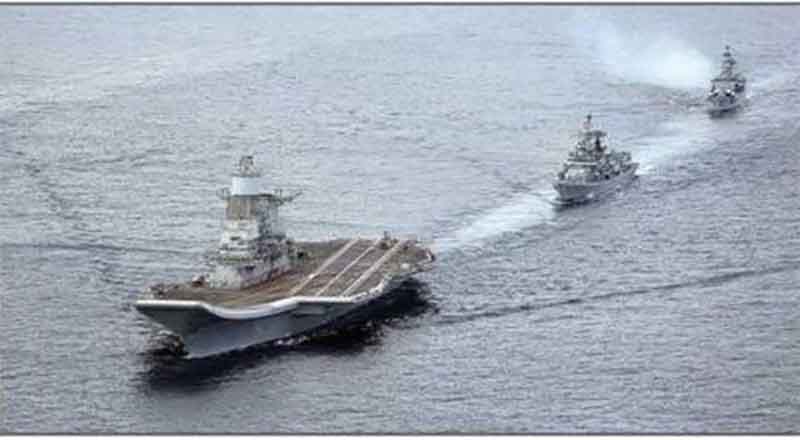Indian Navy which is one of the largest navies in the world is taking steps to reduce the carbon emission and also meet the global standards.
The Indian Navy in collaboration with Indian Oil Corporation (IOC) has carried out extensive trials for the fuel that will be supplied to run the various ships and frigates of the Navy.
“Successful introduction of the new fuel is a landmark occasion highlighting the enormous potential which exists within the country to produce world class products,” the Navy said in a statement.
The new specification will not only ensure a better quality fuel but also result in a reduced carbon footprint.
The officials said a comparative evaluation of existing international regulations was also examined zeroing on the specification of the fuel. IOC in a joint collaboration with Indian Navy has carried out an extensive and thorough study and a comparative evaluation of existing international regulations (ISO, MARPOL, NATO etc).
“As an outcome, a revised technical specification was arrived at consisting of 22 test parameters including critical parameters cetane number, flash point, sulphur content, sediment content and oxidation stability,” said an official.
“The new specification will not only ensure a better quality fuel but also result in a reduced carbon footprint,” he said.
Indian Oil Corporation post upgradation of the refinery units, initiated limited supply of the product to Indian Navy platforms following which rigorous machinery performance checks and acceptance trials were carried out. Distinct improvements in fuel quality were observed. Given the positive results, the new fuel was therefore decided for pan Navy implementation. The launch of the new fuel (High Flash High Speed Diesel) HFHSD – IN 512, with revised technical specifications was undertaken.
One of the Key Result Area for Indian Navy has been fuel quality standards revision to keep pace with induction of new technology equipment and meet contemporary emission standards. With the advent of technology and refining techniques in the petroleum industry better quality of fuel abiding to more stringent specifications has become a necessity. Hence, continuous improvement in technical specification for diesels is the primary focus area.
With the successful introduction of the new fuel is a landmark occasion highlighting the enormous potential which exists within the country to produce world class products.
It will also benefit other IOC consumers in the country like Indian Coast Guard and other merchant marine in the coming years. The achievement would also mark a new high with quality fuel available to all foreign Navy ships at Indian ports during exercises with the Indian Navy.
The initiative would go a long way in enhancing equipment reliability, performance, reduced carbon footprint, emissions and more importantly would be a key enabler in the Navy’s ‘Mission Based Deployment’ on a global scale.





